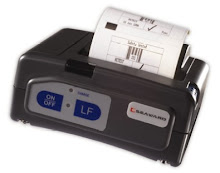A password manager is a typical software that enables you to organize your user name, password or PIN in an encrypted format and also the chosen URLs for a safe and secure logon to systems, application data files, networks and web sites and their retrieval when required. All such data will be controlled by a confidential ‘Master Password’ to encrypt or decrypt your data within. Thus, the password manager eases you from the hurdle of remembering (and often forgetting and ‘fighting’ to retrieve) the user ID and passwords for different sites/ email ids. The added advantage is that it prevents hackers from tapping your confidential information. Just remember that master forward and forget all other passwords.
A best password manager should have the following 7 features
1. Encryption: It should use some encryption algorithm to encrypt your logon data. If the username and passwords are in unencrypted format, i.e. clear text, anybody will be tempted to play with it, which may land you in trouble.
2. Ease of Use: It may be included in the tool bar of your browser. When you save the data therein, it should be able to memorize the URL, user name, password and other selected details, if any. It should have the flexibility to be renamed as and when required for different purposes say for Paypal, Hotmail, Citibank, etc. It should be so convenient that when you select the entry in the toolbar, it should allow you to log in there automatically, without requiring you to do the cumbersome ‘drag and drop’ your username and/or password.
3. Portability: The user names and passwords should be able to be stored in some external hard drive or pen drive or iPod or, memory flash card. It means that these confidential data may be exported to another computer.
4. Compatibility with Your Browser: Ensure that the password manages should be compatible with FireFox or Opera browser also, besides Internet Explorer.
5. Built-in Password Generator is another feature towards a security point of view, thus preventing the possible hijackers from barging into and meddling with your account.
6. Ability to Modify Password
When there is a change in the logon fields or the URL, your password manager should be able to adapt them to have the latest changes saved to it.
7. Built-in Form Filler (though not a necessary feature) will be an added advantage, since your personal information will get transformed into the online forms, at the click of the mouse.
Management of passwords is a discernible challenge, confronted by the security administrators, service desk personnel and users. Main issues involved here are the synchronization of passwords between all the systems, secure authentication, reset if passwords and OS level account lockouts. Besides, a best password manager will have the features like BYOD Enabled, Multi-factor Authentication, OS Unlock, Active Directory Integration, Multi tenant Architecture, Synchronization.
A best password manager should have the following 7 features
1. Encryption: It should use some encryption algorithm to encrypt your logon data. If the username and passwords are in unencrypted format, i.e. clear text, anybody will be tempted to play with it, which may land you in trouble.
2. Ease of Use: It may be included in the tool bar of your browser. When you save the data therein, it should be able to memorize the URL, user name, password and other selected details, if any. It should have the flexibility to be renamed as and when required for different purposes say for Paypal, Hotmail, Citibank, etc. It should be so convenient that when you select the entry in the toolbar, it should allow you to log in there automatically, without requiring you to do the cumbersome ‘drag and drop’ your username and/or password.
3. Portability: The user names and passwords should be able to be stored in some external hard drive or pen drive or iPod or, memory flash card. It means that these confidential data may be exported to another computer.
4. Compatibility with Your Browser: Ensure that the password manages should be compatible with FireFox or Opera browser also, besides Internet Explorer.
5. Built-in Password Generator is another feature towards a security point of view, thus preventing the possible hijackers from barging into and meddling with your account.
6. Ability to Modify Password
When there is a change in the logon fields or the URL, your password manager should be able to adapt them to have the latest changes saved to it.
7. Built-in Form Filler (though not a necessary feature) will be an added advantage, since your personal information will get transformed into the online forms, at the click of the mouse.
Management of passwords is a discernible challenge, confronted by the security administrators, service desk personnel and users. Main issues involved here are the synchronization of passwords between all the systems, secure authentication, reset if passwords and OS level account lockouts. Besides, a best password manager will have the features like BYOD Enabled, Multi-factor Authentication, OS Unlock, Active Directory Integration, Multi tenant Architecture, Synchronization.








